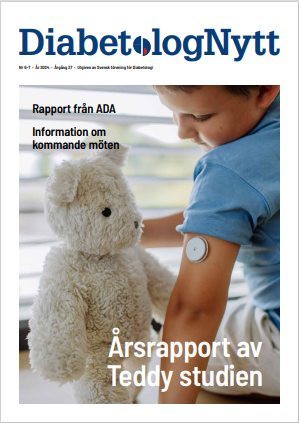BERLIN – Women who are diagnosed with diabetes at the time of an acute myocardial infarction are three times more likely to die over the next 3 years as are similar women without diabetes.
In contrast, men whose diabetes was diagnosed during their hospitalization for acute MI had twice the risk of death after 3 years compared with men without diabetes, based on the latest results of the SWEETHEART registry, a prospective study of 2,767 patients with ST- or non-ST-elevation myocardial infarction
Dr. Diethelm Tschoepe
The double-whammy of diabetes and coronary artery disease is ”extraordinarily dangerous” for women, said Dr. Diethelm Tschoepe of the Heart and Diabetes Center, Bad Oeynhausen, Germany. Women with a new diagnosis of diabetes ”have a much, much worse prognostic gradient” than do men with newly diagnosed diabetes, and men and women without diabetes.
Dr. Tschoepe said the findings suggest there is a large population of women with longstanding, undiagnosed diabetes that goes unrecognized until a cardiovascular event. ”The vigilance of women and their treatment physicians seems to be insufficient” to detect their diabetes.
Additionally, testing for diabetes needs to occur in all patients who experience a cardiovascular event, despite the logistic difficulty this might present, Dr. Tschoepe said. ”I am working in a place where endocrinologists, cardiac surgeons, and cardiologists work together, but it is still a tough fight to get every patient tested.”
Among women in the study, the 3-year mortality rate was 30% for those with known diabetes and 30.5% for those with newly diagnosed diabetes – significantly higher than the rates for those without diabetes and those with impaired glucose regulation (11% and 13% respectively).
Among men, the mortality rate was highest among those with known diabetes (35%), followed by those with newly diagnosed disease (22%). Both groups had significantly higher mortality than that seen in those without diabetes and those with impaired glucose regulation (11% each).
In the overall multivariate adjusted model, patients with known diabetes were 77% more likely to die and 68% more likely to experience a major cardiovascular or cerebrovascular event than were those without diabetes. Those with newly diagnosed diabetes were 43% more likely to die and 18% more likely to have a significant adverse event than were those without diabetes, Dr. Tschoepe reported at the annual meeting of the European Association for the Study of Diabetes.
At the time of their coronary events, some level of glycemic dysregulation affected 68% of the women and 60% of the men in the study.
At admission, 30% of women and 23% of men had diabetes. Testing identified diabetes in an additional 20% of women and 15% of men. Another 18% of women and 23% of men had impaired glucose tolerance or impaired fasting glucose.
There was a ”striking difference” in diabetes treatment between the groups at discharge, Dr. Tschoepe said, with 47% of women and 37% of men on some form of therapy. Oral treatment was prescribed for 27% of the women and 37% of the men, while 39% of the women and 27% of the men were discharged on insulin; both of these differences were significant. Exactly the same number of men and women were discharged on the combination of insulin and oral therapy (6.2%).
Men were more likely to be discharged on dietary treatment alone (42% vs. 39%), but this was not a significant difference. Dr. Tschoepe added.
Patients were enrolled in the trial within 24 hours of treatment and followed for 3 years. In addition to cardiovascular treatment, all patients underwent an oral glucose tolerance test as recommended in 2007 by the European Society of Cardiology and the European Association for the Study of Diabetes.
There were 706 women in the cohort. The women were older than the men, average age 71 and 64 years, respectively; were less likely to have a prior MI, 13% vs. 19%; had fewer prior percutaneous coronary interventions, 12% vs. 18%; had more hypertension, 80% vs. 69%; were less likely to smoke, 25% vs. 40%; and were more likely to have a known history of diabetes, 30% vs. 23%.
The mean blood glucose value at admission was significantly higher in women than in men, 137 mg/dL vs. 127 mg/dL. Women also had a significantly higher HbA1c, 6.1% vs. 5.8%. STEMI and NSTEMI were equally distributed in men and women.
Almost all of the patients underwent a coronary angiogram (95% of women, 97% of men). One-, two-, and three-vessel disease were equally distributed in both genders. Cardiovascular drug therapy did not significantly differ at discharge, with the vast majority receiving aspirin, clopidogrel, beta-blockers and ACE inhibitors as appropriate with guideline recommendations.
From ADA
Nyhetsinfo
www red DiabetologNytt





